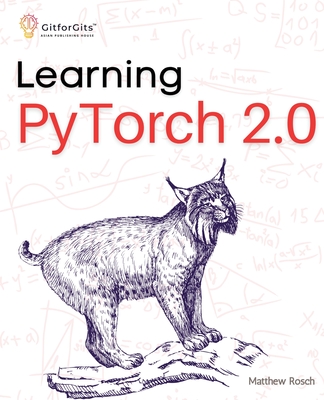Learning PyTorch 2.0: Experiment deep learning from basics to complex models using every potential capability of Pythonic PyTorch

Learning PyTorch 2.0: Experiment deep learning from basics to complex models using every potential capability of Pythonic PyTorch
A substantial portion of the book is dedicated to illustrating how to build simple PyTorch models. This includes uploading and preparing datasets, defining the architecture, training, and predicting. It provides hands-on exercises with a real-world dataset. The book then dives into exploring PyTorch's nn module and gives a detailed comparison of different types of networks like Feedforward, RNN, GRU, CNN, and their combination.
Further, the book delves into understanding the training process and PyTorch's optim module. It explores the overview of optimization algorithms like Gradient Descent, SGD, Mini-batch Gradient Descent, Momentum, Adagrad, and Adam. A separate chapter focuses on advanced concepts in PyTorch 2.0, like model serialization, optimization, distributed training, and PyTorch Quantization API. In the final chapters, the book discusses the differences between TensorFlow 2.0 and PyTorch 2.0 and the step-by-step process of migrating a TensorFlow model to PyTorch 2.0 using ONNX. It provides an overview of common issues encountered during this process and how to resolve them.
Key Learnings A comprehensive introduction to PyTorch and CUDA for deep learning. Detailed understanding and operations on PyTorch tensors. Step-by-step guide to building simple PyTorch models. Insight into PyTorch's nn module and comparison of various network types. Overview of the training process and exploration of PyTorch's optim module. Understanding advanced concepts in PyTorch like model serialization and optimization. Knowledge of distributed training in PyTorch. Practical guide to using PyTorch's Quantization API. Differences between TensorFlow 2.0 and PyTorch 2.0. Guidance on migrating TensorFlow models to PyTorch using ONNX.
Table of Content Introduction to Pytorch 2.0 and CUDA 11.8 Getting Started with Tensors Advanced Tensors Operations Building Neural Networks with PyTorch 2.0 Training Neural Networks in PyTorch 2.0 PyTorc
PRP: 371.94 Lei
Acesta este Prețul Recomandat de Producător. Prețul de vânzare al produsului este afișat mai jos.
297.55Lei
297.55Lei
371.94 LeiLivrare in 2-4 saptamani
Descrierea produsului
A substantial portion of the book is dedicated to illustrating how to build simple PyTorch models. This includes uploading and preparing datasets, defining the architecture, training, and predicting. It provides hands-on exercises with a real-world dataset. The book then dives into exploring PyTorch's nn module and gives a detailed comparison of different types of networks like Feedforward, RNN, GRU, CNN, and their combination.
Further, the book delves into understanding the training process and PyTorch's optim module. It explores the overview of optimization algorithms like Gradient Descent, SGD, Mini-batch Gradient Descent, Momentum, Adagrad, and Adam. A separate chapter focuses on advanced concepts in PyTorch 2.0, like model serialization, optimization, distributed training, and PyTorch Quantization API. In the final chapters, the book discusses the differences between TensorFlow 2.0 and PyTorch 2.0 and the step-by-step process of migrating a TensorFlow model to PyTorch 2.0 using ONNX. It provides an overview of common issues encountered during this process and how to resolve them.
Key Learnings A comprehensive introduction to PyTorch and CUDA for deep learning. Detailed understanding and operations on PyTorch tensors. Step-by-step guide to building simple PyTorch models. Insight into PyTorch's nn module and comparison of various network types. Overview of the training process and exploration of PyTorch's optim module. Understanding advanced concepts in PyTorch like model serialization and optimization. Knowledge of distributed training in PyTorch. Practical guide to using PyTorch's Quantization API. Differences between TensorFlow 2.0 and PyTorch 2.0. Guidance on migrating TensorFlow models to PyTorch using ONNX.
Table of Content Introduction to Pytorch 2.0 and CUDA 11.8 Getting Started with Tensors Advanced Tensors Operations Building Neural Networks with PyTorch 2.0 Training Neural Networks in PyTorch 2.0 PyTorc
Detaliile produsului









